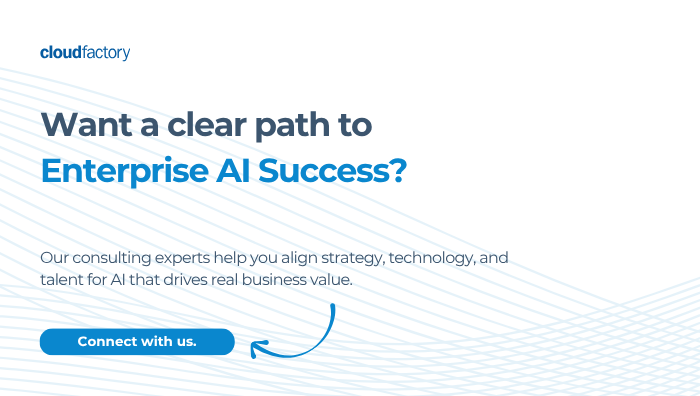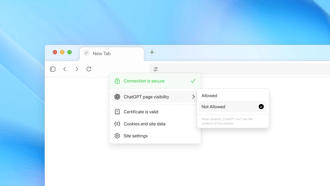The arrival of OpenAI's AgentKit has generated considerable excitement. By offering a visual, drag-and-drop environment for building AI agents, the platform promises to accelerate development cycles and make sophisticated AI more accessible. For experienced AI and ML practitioners, tools that streamline deployment and reduce operational overhead are always welcome. However, the path from adopting a new toolkit to achieving transformative AI outcomes is rarely straightforward.

While AgentKit simplifies the creation of agents, it does not eliminate the fundamental challenges of enterprise AI implementation. Organizations must look beyond the simplified interface and confront the operational, strategic, and financial realities that accompany these powerful tools. This article explores four harsh realities that enterprise organizations must navigate to successfully unlock the potential of AI with AgentKit, providing a balanced perspective for technical leaders aiming to turn innovation into scalable, secure, and high-impact solutions.
1. The Need for Skilled Talent Persists
A primary appeal of platforms like AgentKit is their potential to democratize AI development. The visual canvas and low-code features can empower developers who are not deep learning specialists to build and deploy agents. However, this simplification at the user interface level masks the underlying complexity of creating robust, enterprise-grade AI systems. The reality is that building a functional agent is only the first step.
Optimizing, securing, and scaling these agents requires a deep understanding of AI/ML principles, data architecture, and software engineering. Your teams will still need experts who can:
- Design and Optimize Complex Workflows: While the drag-and-drop interface is intuitive, designing an efficient, multi-agent system that solves a real business problem is a strategic discipline. It requires practitioners who understand how to orchestrate agentic workflows, manage state, and handle exceptions gracefully.
- Integrate and Manage Data Pipelines: AgentKit’s Connector Registry simplifies connecting to data sources, but it doesn't build the data pipelines themselves. You need data engineers who can ensure data quality, govern access, and build efficient pipelines to feed your agents with clean, reliable information.
- Ensure Security and Compliance: Implementing features like Guardrails requires security expertise. Protecting against PII leakage, prompt injection, and other vulnerabilities is a specialized skill. Your organization needs professionals who can configure and validate these security measures to meet stringent enterprise and regulatory standards.
AgentKit is a powerful force multiplier for skilled teams, not a replacement for them. It allows experts to work more efficiently, but the underlying need for talent in AI, data engineering, and cybersecurity remains as critical as ever.
2. Data Governance Becomes More Complex, Not Less
As it becomes easier to build and deploy agents that connect to various data sources, the challenge of data governance intensifies. AgentKit's Connector Registry centralizes connections to platforms like SharePoint and Google Drive, which is a significant step forward. However, this centralization also creates a critical control point that demands rigorous oversight.
Enterprises must address several governance realities:
- Controlling Data Access: With agents capable of accessing a wide array of internal data, you must implement granular access controls. Who decides which agents can access sensitive financial data or customer PII? How are these permissions managed, audited, and revoked? A clear data governance framework is essential before deploying agents at scale.
- Ensuring Data Lineage and Traceability: When an agent produces an incorrect output or makes a flawed decision, you must be able to trace the issue back to its source. This requires complete data lineage, allowing you to see what data the agent used and how it processed it. Without this traceability, debugging becomes nearly impossible, and regulatory compliance is put at risk.
- Managing Data Proliferation: As teams across the organization begin building their own agents, you risk creating a "wild west" of data usage. Without a centralized governance strategy, you may face duplicated data sources, inconsistent logic, and a sprawling, unmanageable ecosystem of agents.
AgentKit provides the tools to connect to data, but the responsibility for governing that data securely and effectively still rests squarely on the enterprise.
3. Integration Hurdles Are Unavoidable
Modern enterprises operate on a complex web of legacy systems, custom applications, and third-party SaaS platforms. While AgentKit is designed to help developers build and ship AI agents more easily, integrating these agents seamlessly into existing enterprise workflows presents a significant technical challenge. The promise of building intelligent assistants in mintues can quickly meet the reality of months-long integration projects.
Technical leaders must plan for several integration realities:
- Interfacing with Legacy Systems: Many core business processes still run on older, monolithic systems with limited or non-existent APIs. Integrating AI agents with these systems often requires building custom adapters, middleware, or leveraging robotic process automation (RPA) as a bridge. This adds complexity and maintenance overhead.
- Ensuring System-Wide Cohesion: An AI agent does not operate in a vacuum. Its actions must be coordinated with other systems. For example, a procurement agent that approves a purchase order must trigger actions in the finance, inventory, and vendor management systems. Orchestrating these cross-system workflows requires careful architectural planning.
- Maintaining Performance and Reliability: Every integration point is a potential point of failure. As you connect agents to more systems, you increase the risk of latency, downtime, and data synchronization issues. Robust monitoring and error handling are critical to ensure that your integrated solution is reliable enough for production use.
AgentKit's ChatKit simplifies embedding a chat UI, but this is just the tip of the integration iceberg. True enterprise value is unlocked when agents are deeply woven into core business processes, a task that requires significant integration effort.
4. The Total Cost of Ownership Extends Beyond Initial Development
The announcement of AgentKit rightly focuses on the speed of initial development. However, for enterprise leaders managing budgets, the total cost of ownership (TCO) is a more critical metric. The initial build is often the least expensive part of an AI solution's lifecycle.
The ongoing costs that enterprises must account for include:
- Inference and API Usage: Every time an agent runs, it consumes resources and incurs costs. High-volume applications can lead to substantial API bills. Enterprises must forecast this usage accurately and optimize their agentic workflows to be as efficient as possible.
- Continuous Monitoring and Maintenance: AI models and agents are not "set it and forget it" solutions. They require continuous monitoring to detect performance degradation, model drift, and new security vulnerabilities. This requires dedicated tools and personnel, adding to the operational overhead.
- Re-training and Fine-Tuning: The world changes, and your agents must adapt. Models may need to be retrained with new data or fine-tuned to handle new tasks. This iterative cycle of improvement is essential for maintaining an agent's effectiveness, but it also represents a recurring cost.
- Infrastructure and Governance Tools: While AgentKit provides the core development environment, you will likely need additional tools for MLOps, security scanning, and compliance auditing. These platforms add to the overall cost of your AI stack.
A successful AI strategy requires a clear-eyed view of the long-term financial commitment. While AgentKit can reduce upfront development costs, enterprises must budget for the significant ongoing expenses required to operate, maintain, and evolve their AI agents at scale.
Conclusion: A Tool for Acceleration, Not a Silver Bullet
OpenAI's AgentKit is a significant advancement in the journey to make AI more accessible and practical for enterprises. It provides a powerful platform to accelerate development, improve collaboration, and streamline the creation of AI agents. However, it is a tool, not a complete solution to the challenges of enterprise AI.
Successfully navigating these complexities often requires a trusted partner with experience across the full spectrum of AI operations. CloudFactory brings deep expertise in assembling and managing specialized AI talent, supporting organizations as they design, implement, and scale transformative AI initiatives. Our teams work alongside yours to provide the skilled data engineers, machine learning specialists, and quality assurance experts needed to sustain sophisticated agent-driven solutions—ensuring your AgentKit deployments deliver reliable and actionable business results.
Beyond talent, CloudFactory helps enterprises address the critical requirements of secure data governance and seamless system integration. We support the development of robust data pipeline architectures, manage access controls, and enable comprehensive audit trails that keep your AI initiatives compliant and traceable. Coupled with integration experience across legacy and cloud platforms, CloudFactory equips enterprises to extract the full value from tools like AgentKit—turning operational challenges into opportunities for innovation, scalability, and long-term growth.
Ready to unlock the full potential of AgentKit and accelerate your AI transformation? Connect with our team today to discuss how CloudFactory can support your enterprise AI journey.
.png?width=1563&height=1563&name=Untitled%20design%20(38).png)




.png?width=1563&height=1563&name=Untitled%20design%20(30).png)



.png?width=1563&height=1563&name=Untitled%20design%20(33).png)


.png?width=1563&height=1563&name=Untitled%20design%20(34).png)














